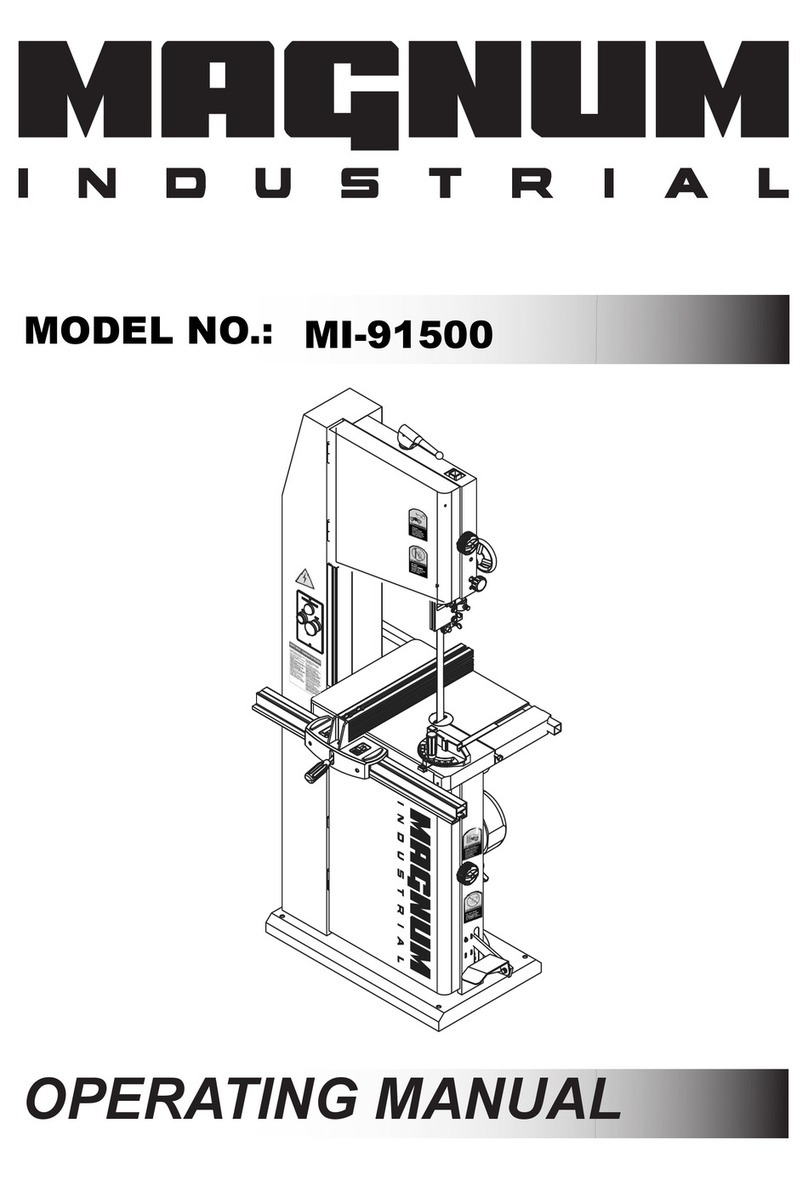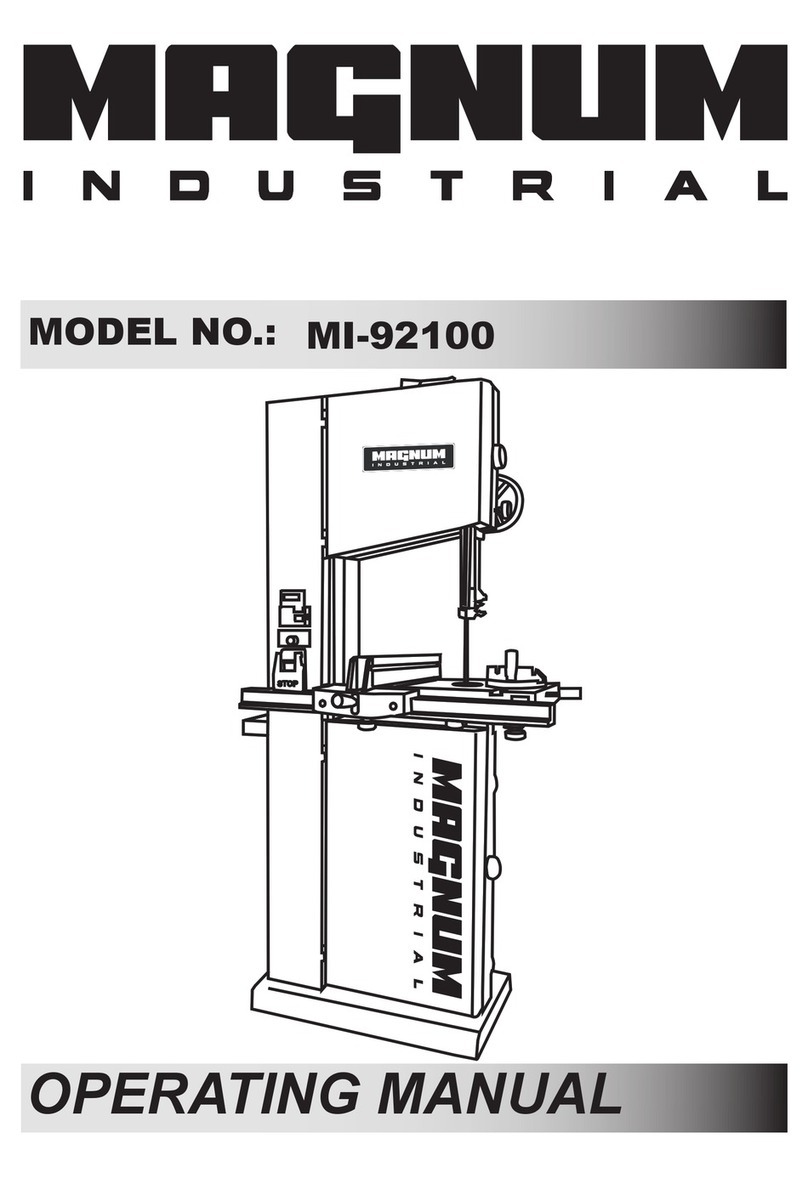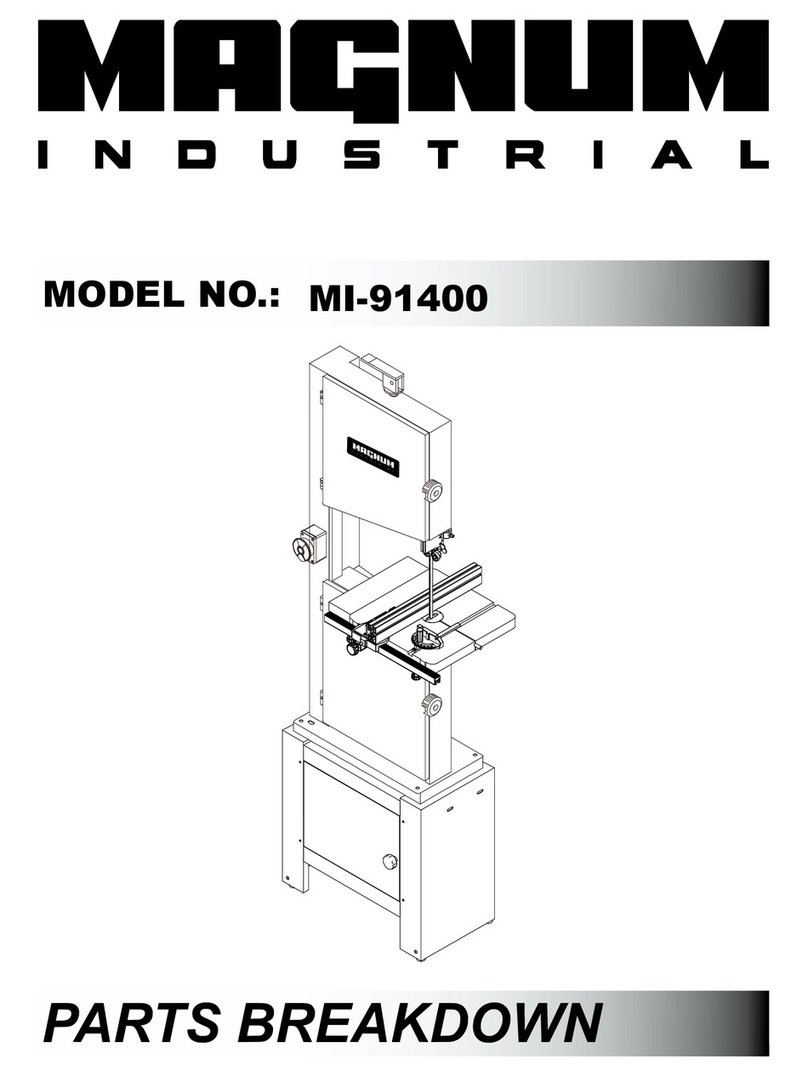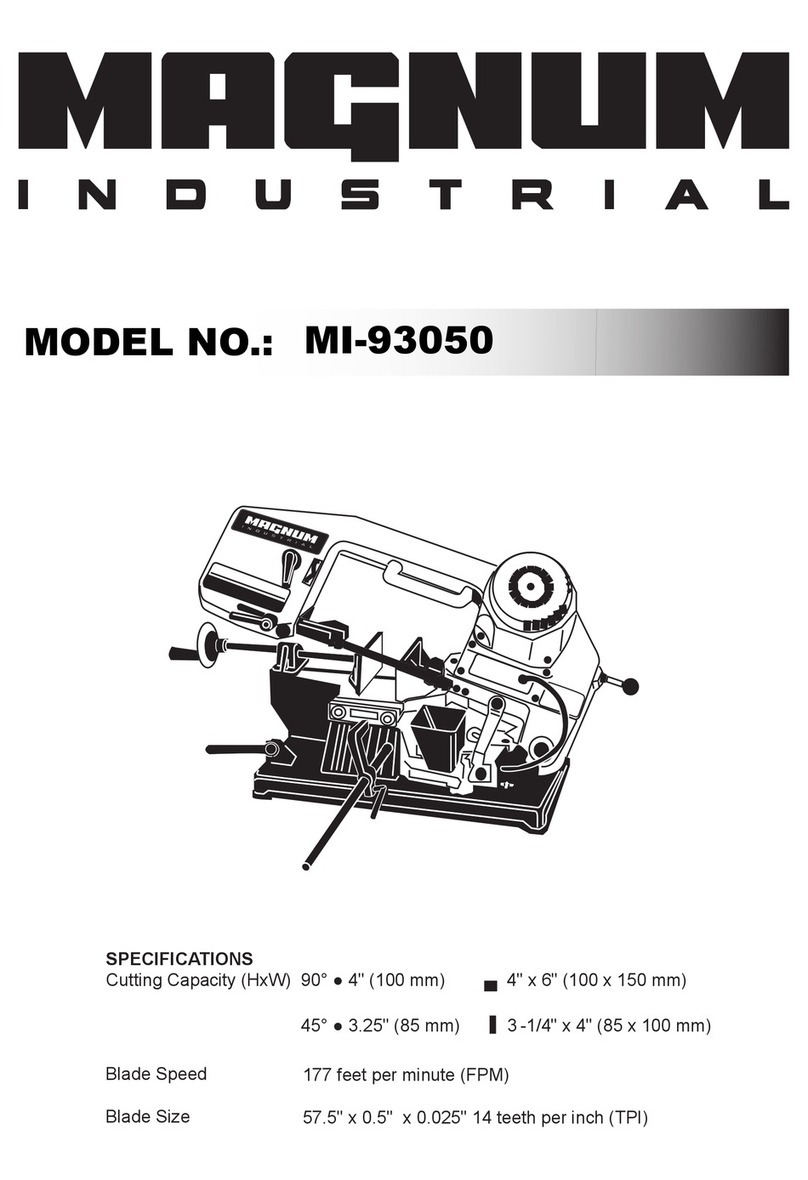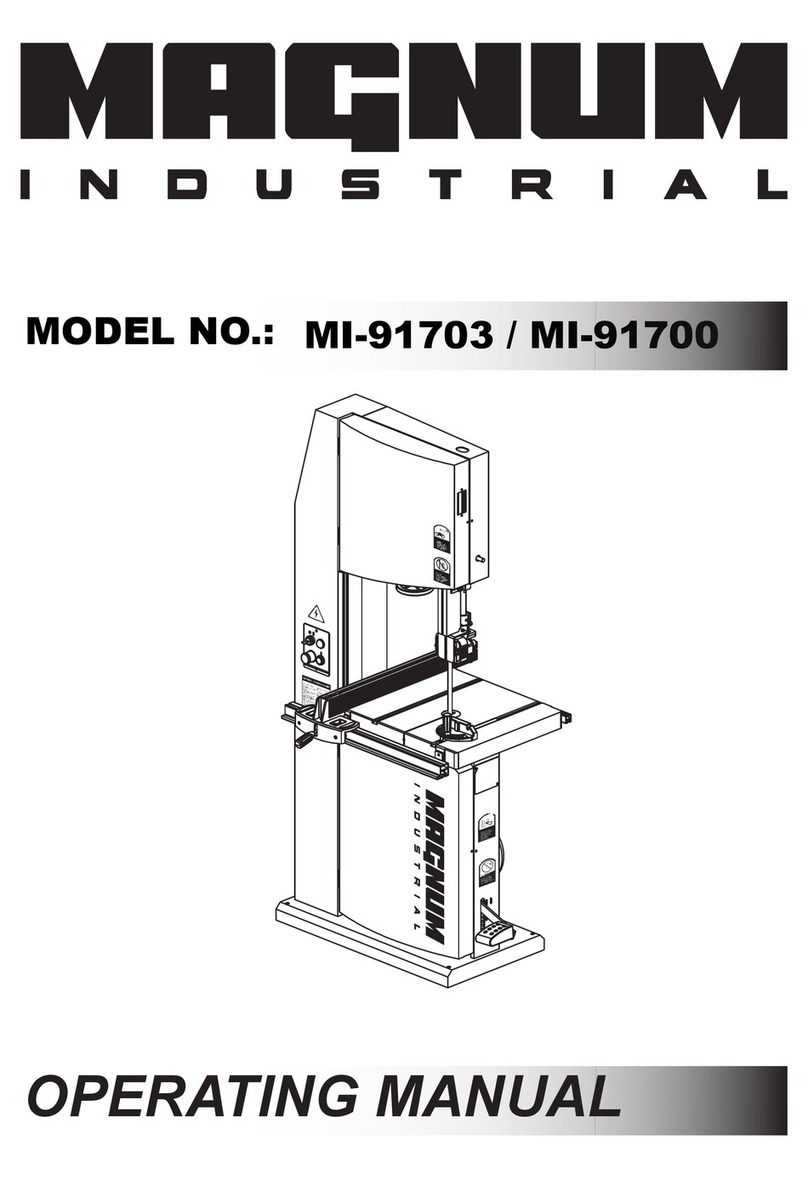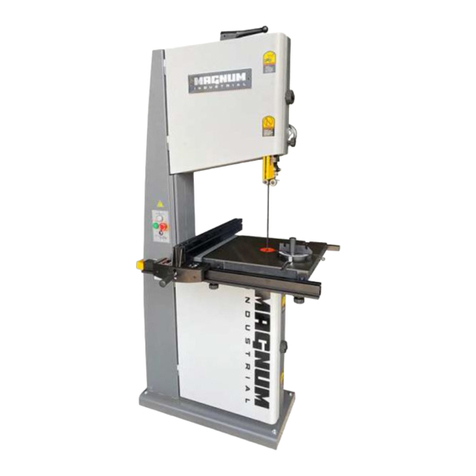
ADJUSTING THE BLADE GUARD FOR DEPTH OF CUT
The blade guard can be moved up or down to accommodate
the height of the work to be cut. To prevent the
blade (which is exible and which would not otherwise
be supported) from slipping out of position during cutting,
and to reduce risks of injuries, a minimum amount
of blade should be exposed.
The blade guard should be set 1/8” - 1/4” above
the workpiece A to prevent the blade from exing
out of position or o-line during cutting.
Adjust the height of the blade guard B to suit the thickness
of the workpiece as follows:
1. Make sure the bandsaw is turned off and the power cord is
disconnected from the power source.
2. Loosen the smaller lock knob C.
3. Move the blade guide assembly up or down D, then re-tighten
the lock knob C.
Note: The depth gauge E on the front of the blade
guard can be used as a reference but it is not
intended for high precision measurements.
ADJUSTING THE UPPER GUIDES BLOCKS AND THRUST BEARING
Note: Before adjusting the upper and lower blade guides and thrust bearings, make sure the
blade is tensioned and tracking properly. Adjust the upper and lower blade guides and thrust
bearings after each blade tension and tracking adjustment. Whenever the upper blade guide
and thrust bearing are adjusted, the lower blade guide and thrust bearing should also be
adjusted.
The blade guides blocks keep the blade from moving from side to side during cutting and must be snug but not touching the
blade in order to ensure accurate cuts. The space between each block and the blade must not exceed 0.02" (the thickness
of a sheet of paper). If less space is left, the blade will get stuck or jammed between both blocks. Too much friction will
cause blade to overheat and break. Also, the guide blocks must remain at least 1/32” behind the blade teeth to prevent
damage to the blade.
The thrust bearing keeps the blade from moving back and out of position when the work is being fed into the blade and
must be very close to the back of the blade to prevent damage to the blade during cutting.
Adjust the positioning of the upper blade guides blocks:
To avoid injury, make sure that the switch is in
the “OFF” position and that the power cord is
unplugged before performing any adjustments
on the bandsaw.
1. Loosen the two set screwsAusing the supplied 3 mm
Allen key.
2. Push the guide blocks B towards the blade.
